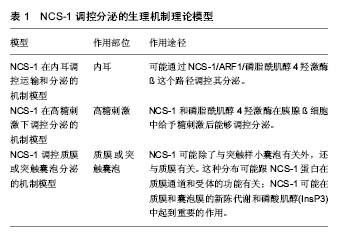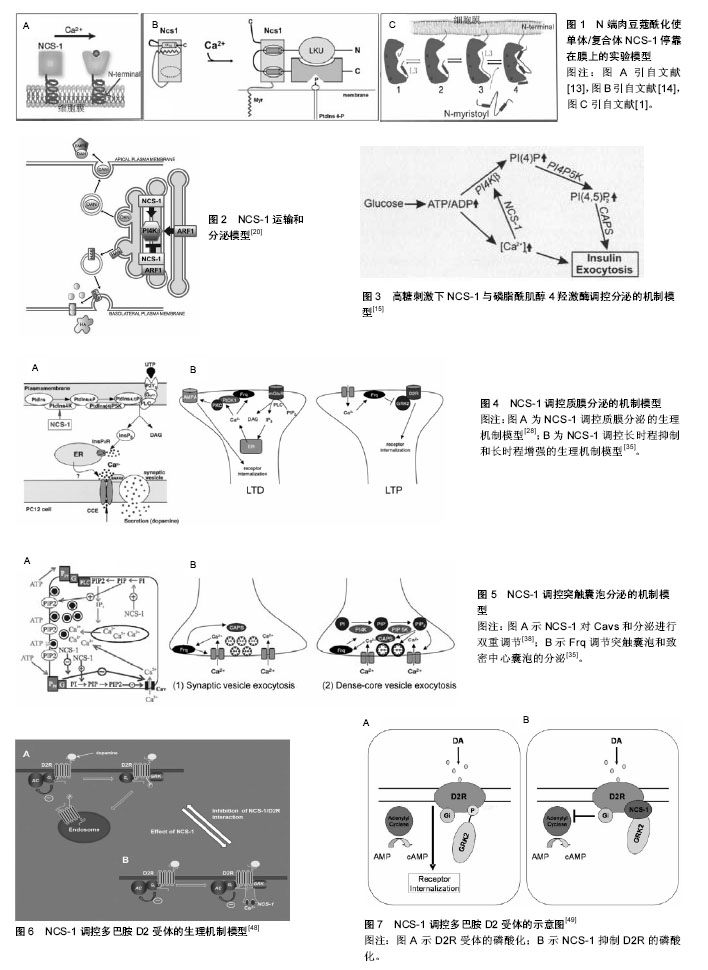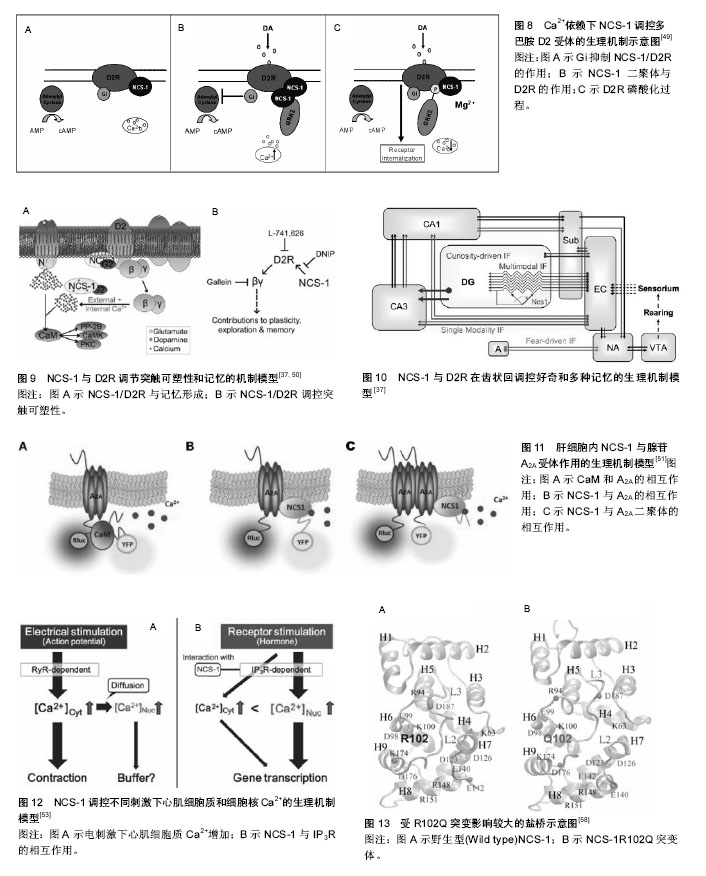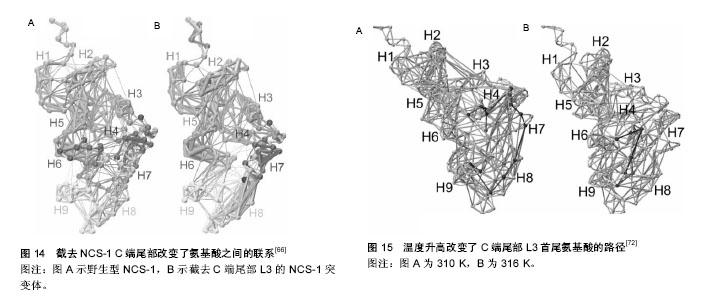| [1] Heidarsson PO, Bjerrum-Bohr IJ, Jensen GA, et al. The C-terminal tail of human neuronal calcium sensor 1 regulates the conformational stability of the Ca 2+- activated state.J Mol Biol. 2012;417: 51-64.[2] Hilfiker S. Neuronal calcium sensor-1: a multifunctional regulator of secretion.Biochem Soc Trans. 2003;31: 828-832.[3] O'Callaghan DW, Ivings L, Weiss JL, et al. Differential use of myristoyl groups on neuronal calcium sensor proteins as a determinant of spatio-temporal aspects of Ca2+ signal transduction.J Biol Chem. 2002;277: 14227-14237.[4] McFerran BW, Weiss JL, Burgoyne RD. Neuronal Ca2+ sensor 1. Characterization of the myristoylated protein, its cellular effects in permeabilized adrenal chromaffin cells, Ca2+-independent membrane association, and interaction with binding proteins, suggesting a role in rapid Ca2+ signal transduction.J Biol Chem. 1999;274: 30258-30265.[5] Peitzsch RM, McLaughlin S. Binding of acylated peptides and fatty acids to phospholipid vesicles: pertinence to myristoylated proteins.Biochemistry. 1993;32: 10436-10443.[6] O'Callaghan DW, Burgoyne RD. Identification of residues that determine the absence of a Ca2+/myristoyl switch in neuronal calcium sensor-1.J Biol Chem. 2004;279: 14347-14354.[7] Strahl T, Grafelmann B, Dannenberg J,et al. Conservation of regulatory function in calcium-binding proteins: human frequenin (neuronal calcium sensor-1) associates productively with yeast phosphatidylinositol 4-kinase isoform, Pik1.J Biol Chem. 2003;278: 49589-49599.[8] Bellucci L, Corni S, Di Felice R, et al. The Structure of Neuronal Calcium Sensor-1 in SolutionRevealed by Molecular Dynamics Simulations. PLoS One. 2013;8: e74383.[9] 张占军,李澎,邱蕾,等. 神经元钙传感蛋白的研究进展及其在脑缺血中的作用[J].中国药理学通报. 2009;25(1): 12-15.[10] Ames B, Hendricks KB, Strahl T, et al. Structure and calcium-binding properties of Frq1, a novel calcium sensor in the yeast Saccharomyces cerevisiae.Biochemistry. 2000;39: 12149-12161.[11] Ikura M. Calcium binding and conformational response in EF-hand proteins.Trends Biochem Sci. 1996;21: 14-17.[12] Aravind P, Chandra K, Reddy PP, et al. Regulatory and structural EF-hand motifs of neuronal calcium sensor-1: Mg2+ modulates Ca2+ binding, Ca2+-induced conformational changes, and equilibrium unfolding transitions.J Mol Biol. 2008;376:1100-1115.[13] Haynes LP, Burgoyne RD. Unexpected tails of a Ca2+ sensor. Nat Chem Biol. 2008;4: 90-91.[14] Lim S, Strahl T, Thorner J, et al. Structure of a Ca2+-myristoyl switch protein that controls activation of a phosphatidylinositol 4-kinase in fission yeast.J Biol Chem. 2011;286: 12565- 12577.[15] Gromada J, Bark C, Smidt K, et al. Neuronal calcium sensor-1 potentiates glucose-dependent exocytosis in pancreatic beta cells through activation of phosphatidylinositol 4-kinase beta.Proc Natl Acad Sci U S A. 2005;102:10303-10308.[16] Bruns JR, Ellis MA, Jeromin A, et al. Multiple roles for phosphatidylinositol 4-kinase in biosynthetic transport in polarized Madin-Darby canine kidney cells.J Biol Chem. 2002;277: 2012-2018.[17] Walch-Solimena C, Novick P. The yeast phosphatidylinositol-4-OH kinase pik1 regulates secretion at the Golgi.Nat Cell Biol. 1999;1: 523-525.[18] Weisz OA, Gibson GA, Leung SM, et al. Overexpression of frequenin, a modulator of phosphatidylinositol 4-kinase, inhibits biosynthetic delivery of an apical protein in polarized madin-darby canine kidney cells.J Biol Chem. 2000;275: 24341-24347.[19] Hendricks KB, Wang BQ, Schnieders EA, et al. Yeast homologue of neuronal frequenin is a regulator of phosphatidylinositol-4-OH kinase.Nat. Cell. Biol. 1999;1: 234-241.[20] Petko JA, Kabbani N, Frey C, et al. Proteomic and functional analysis of NCS-1 binding proteins reveals novel signaling pathways required for inner ear development in zebrafish. BMC neuroscience. 2009;10: 27.[21] Haynes LP, Sherwood MW, Dolman NJ, et al. Specificity, promiscuity and localization of ARF protein interactions with NCS-1 and phosphatidylinositol-4 kinase-III beta.Traffic. 2007;8: 1080-1092.[22] Haynes LP, Thomas GM, Burgoyne RD. Interaction of neuronal calcium sensor-1 and ADP-ribosylation factor 1 allows bidirectional control of phosphatidylinositol 4-kinase beta and trans-Golgi network-plasma membrane traffic.J Biol Chem. 2005;280: 6047-6054.[23] Chang W, Lin Z, Kulessa H, et al. Bmp4 is essential for the formation of the vestibular apparatus that detects angular head movements.PLoS Genet. 2008;4: e1000050.[24] Yamanishi T, Katsu K, Funahashi J, et al. Dan is required for normal morphogenesis and patterning in the developing chick inner ear. Dev Growth Differ. 2007; 49(1):13-26.[25] Busch-Nentwich E, Sollner C, Roehl H, et al. The deafness gene dfna5 is crucial for ugdh expression and HA production in the developing ear in zebrafish.Development. 2004;131: 943-951.[26] Haddon CM, Lewis JH. Hyaluronan as a propellant for epithelial movement: the development of semicircular canals in the inner ear of Xenopus.Development. 1991;112: 541-550.[27] Omata Y, Nojima Y, Nakayama S, et al. Role of Bone morphogenetic protein 4 in zebrafish semicircular canal development.Dev Growth Differ. 2007;49: 711-719.[28] Koizumi S, Rosa P, Willars GB, et al. Mechanisms underlying the neuronal calcium sensor-1-evoked enhancement of exocytosis in PC12 cells.J Biol Chem. 2002;277: 30315- 30324.[29] Nef S, Fiumelli H, de Castro E,et al. Identification of neuronal calcium sensor (NCS-1) possibly involved in the regulation of receptor phosphorylation.J Recept Signal Transduct Res. 1995;15: 365-378.[30] Weiss JL, Archer DA, Burgoyne RD. Neuronal Ca2+ sensor-1/frequenin functions in an autocrine pathway regulating Ca2+ channels in bovine adrenal chromaffin cells.J Biol Chem. 2000;275: 40082-40087.[31] Wang CY, Yang F, He X, et al. Ca2+ binding protein frequenin mediates GDNF-induced potentiation of Ca2+ channels and transmitter release.Neuron. 2001;32: 99-112.[32] Tsujimoto T, Jeromin A, Saitoh N, et al. Neuronal calcium sensor 1 and activity-dependent facilitation of P/Q-type calcium currents at presynaptic nerve terminals.Science. 2002;295: 2276-2279.[33] De Camilli P, Emr SD, McPherson PS,et al. Phosphoinositides as regulators in membrane traffic.Science. 1996;271:1533-1539.[34] Pan CY, Jeromin A, Lundstrom K, et al. Alterations in exocytosis induced by neuronal Ca2+ sensor-1 in bovine chromaffin cells.J Neurosci. 2002;22: 2427-2433.[35] Dason JS, Romero-Pozuelo J, Atwood HL, et al. Multiple roles for frequenin/NCS-1 in synaptic function and development. Mol Neurobiol. 2012;45: 388-402.[36] Jo J, Heon S, Kim MJ, et al. Metabotropic glutamate receptor-mediated LTD involves two interacting Ca2+ sensors, NCS-1 and PICK1.Neuron. 2008;60: 1095-1111.[37] Saab BJ, Georgiou J, Nath A, et al. NCS-1 in the dentate gyrus promotes exploration, synaptic plasticity, and rapid acquisition of spatial memory.Neuron. 2009;63: 643-656.[38] Weiss JL, Hui H, Burgoyne RD. Neuronal calcium sensor-1 regulation of calcium channels, secretion, and neuronal outgrowth.Cell Mol Neurobiol. 2010;30:1283-1292.[39] Dason JS, Romero-Pozuelo J, Marin L, et al. Frequenin/NCS-1 and the Ca2+-channel alpha1-subunit co-regulate synaptic transmission and nerve-terminal growth.J Cell Sci. 2009;122:4109-4121.[40] de Barry J, Janoshazi A, Dupont JL, et al. Functional implication of neuronal calcium sensor-1 and phosphoinositol 4-kinase-beta interaction in regulated exocytosis of PC12 cells.J Biol Chem. 2006;281: 18098-18111.[41] McFerran BW, Graham ME, Burgoyne RD. Neuronal Ca2+ sensor 1, the mammalian homologue of frequenin, is expressed in chromaffin and PC12 cells and regulates neurosecretion from dense-core granules.J Biol Chem. 1998; 273: 22768-22772.[42] Taverna E, Francolini M, Jeromin A, et al. Neuronal calcium sensor 1 and phosphatidylinositol 4-OH kinase beta interact in neuronal cells and are translocated to membranes during nucleotide-evoked exocytosis.J Cell Sci. 2002;115: 3909-3922.[43] Scalettar BA, Rosa P, Taverna E,et al. Neuronal calcium sensor-1 binds to regulated secretory organelles and functions in basal and stimulated exocytosis in PC12 cells.J Cell Sci. 2002;115: 2399-2412.[44] Rajebhosale M, Greenwood S, Vidugiriene J, et al. Phosphatidylinositol 4-OH kinase is a downstream target of neuronal calcium sensor-1 in enhancing exocytosis in neuroendocrine cells.J Biol Chem. 2003;278: 6075-6084.[45] Missale C, Nash SR, Robinson SW, et al. Dopamine receptors: from structure to function.Phys Rev. 1998;78: 189-225.[46] Kebabian JW, Calne DB. Multiple receptors for dopamine. Nature. 1979;277: 93-96.[47] Lian LY, Pandalaneni SR, Patel P, et al. Characterisation of the interaction of the C-terminus of the dopamine D2 receptor with neuronal calcium sensor-1.PLoS One. 2011;6: e27779.[48] Burgoyne RD, Haynes LP. Sense and specificity in neuronal calcium signalling.Biochim Bbiophys Acta. 2015;1853: 1921-1932.[49] Woll MP. Chareacterization of the D2 dopamine receptor/neuronal calcium sensor-1 interaction, In Department of Pharmacology, The Pennsylvania State University, 2009.[50] Saab BJ. The synaptic role of neuronal calcium seneor 1 in dentate gyrus plasticity, curiosity and spatial memory, In Department of molecular genetics, University of Toronto, 2010.[51] Navarro G, Hradsky J, Lluis C, et al. NCS-1 associates with adenosine A(2A) receptors and modulates receptor function. Front Mol Neurosci. 2012;5: 53.[52] Dacres H, Wang J, Dumancic MM, et al. Experimental determination of the Forster distance for two commonly used bioluminescent resonance energy transfer pairs. Anal Chem. 2010;82(1):432-435. [53] Nakao S, Wakabayashi S, Nakamura TY. Stimulus-dependent regulation of nuclear Ca2+ signaling in cardiomyocytes: a role of neuronal calcium sensor-1.PLoS One. 2015;10: e0125050.[54] Piton A, Michaud JL, Peng H, et al. Mutations in the calcium-related gene IL1RAPL1 are associated with autism.Hum Mol Genet. 2008;17: 3965-3974.[55] Handley MT, Lian LY, Haynes LP, et al. Structural and functional deficits in a neuronal calcium sensor-1 mutant identified in a case of autistic spectrum disorder.PLoS One. 2010;5: e10534.[56] Gunasekaran K, Ma B, Nussinov R. Is allostery an intrinsic property of all dynamic proteins?Proteins. 2004;57: 433-443.[57] Ma B, Tsai CJ, Haliloglu T, et al. Dynamic allostery: linkers are not merely flexible.Structure. 2011;19: 907-917.[58] Zhu Y, Wu Y, Luo Y, et al. R102Q mutation shifts the salt-bridge network and reduces the structural flexibility of human neuronal calcium sensor-1 protein.J Phys Chem B. 2014;118: 13112-13122.[59] 朱玉珍,张庆文. 神经元钙传感蛋白R102Q突变体的动力学构象特征[J].中国组织工程研究,2015,19(2): 225-230.[60] Lim S, Strahl T, Thorner J, et al. Structure of a Ca2+-myristoyl switch protein that controls activation of a phosphatidylinositol 4-kinase in fission yeast. J Biol Chem. 2011;286: 12565- 12577.[61] Strahl T, Huttner IG, Lusin JD, et al. Structural insights into activation of phosphatidylinositol 4-kinase (Pik1) by yeast frequenin (Frq1). J Biol Chem. 2007;282: 30949-30959.[62] Bourne Y, Dannenberg J, Pollmann V,et al. Immunocytochemical localization and crystal structure of human frequenin (neuronal calcium sensor 1).The Journal of biological chemistry. 2001;276: 11949-11955.[63] Ames JB, Lim S. Molecular structure and target recognition of neuronal calcium sensor proteins.Biochim Biophys Acta. 2012; 1820: 1205-1213.[64] Kabbani N, Negyessy L, Lin R, et al. Interaction with neuronal calcium sensor NCS-1 mediates desensitization of the D2 dopamine receptor.J. Neurosci. 2002;22: 8476-8486.[65] Woll MP, De Cotiis DA, Bewley MC, et al. Interaction between the D2 dopamine receptor and neuronal calcium sensor-1 analyzed by fluorescence anisotropy.Biochemistry. 2011;50: 8780-8791.[66] Zhu Y, Yang S, Qi R, et al. Effects of the C-terminal tail on the conformational dynamics of human neuronal calcium sensor-1 protein.J Phys Chem. 2015;119: 14236-14244.[67] Kimata T, Sasakura H, Ohnishi N, et al. Thermotaxis of C. elegans as a model for temperature perception, neural information processing and neural plasticity.Worm. 2012;1: 31-41.[68] Wang D, O'Halloran D, Goodman MB. GCY-8, PDE-2, and NCS-1 are critical elements of the cGMP-dependent thermotransduction cascade in the AFD neurons responsible for C. elegans thermotaxis. J Gener Physiol. 2013;142: 437-449.[69] Gomez M, De Castro E, Guarin E, et al. Ca2+ signaling via the neuronal calcium sensor-1 regulates associative learning and memory in C. elegans. Neuron. 2001;30: 241-248.[70] Ye HY, Ye BP, Wang DY. Evaluation of the long-term memory for thermosensation regulated by neuronal calcium sensor-1 in Caenorhabditis elegans.Neurosci Bull. 2008;24: 1-6.[71] Martin VM, Johnson JR, Haynes LP, et al. Identification of key structural elements for neuronal calcium sensor-1 function in the regulation of the temperature-dependency of locomotion in C. elegans. Mol Brain. 2013;6: 39.[72] Zhu Y, Ma B, Qi R, et al. Temperature-dependent conformational properties of human neuronal calcium sensor-1 protein revealed by all-atom simulations.J Phys Chem B. 2016;120: 3551-3559. |
.jpg)




.jpg)